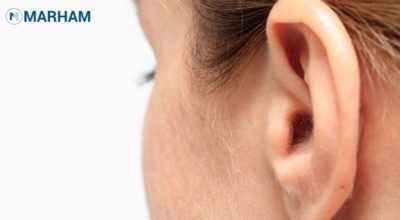The human body is an amazing system consisting of intricate parts, each playing an important role in the functioning of the whole. One of these parts is the smallest bone in the human body, the stapes, located in the ear. It may be difficult to believe that something so small can be so essential, but its size belies its importance.
Key Points
- The smallest bone in the body is the stapes, located in the middle ear.
- It is responsible for transmitting sound waves to the inner ear.
- The size of the stapes can vary significantly from person to person.
- Having a smaller than average stapes can have potential implications for hearing health.
- Understanding the anatomy of the human skeleton and the role of the smallest bones will help us better understand the complexity and fragility of the human body.
In this blog, we will explore the anatomy of the human skeleton, the role of the smallest bone in the human body, the variations in size for this bone, and the potential health implications of the smallest bone.
What is the Smallest Bone in the Human Body?
The smallest bone in the human body is the stirrup bone, also known as the stapes. It is located in the middle ear and is part of the auditory ossicles, which are three tiny bones that are responsible for transmitting sound from the outer ear to the inner ear.
The stirrup bone is the smallest bone in the body, measuring less than 1/10th of an inch long and less than 1/50th of an inch wide. It is important for hearing, and plays a major role in converting sound vibrations into electrical signals for the brain to interpret.
Anatomy of the Human Skeleton:
The human skeleton is an intricate structure composed of 206 bones that form the basic framework of the body. It provides support, protection and structure to our organs, muscles, and other body systems.
The skeleton also produces red and white blood cells and stores minerals. It is one of the most important systems in the body but plays a critical role in keeping us alive. Its intricate nature helps us to move, stand upright and even look the way we do.
The skeleton is composed of the axial and appendicular skeleton which consist of the skull, vertebrae, ribs, arms, legs and hands. Knowing the anatomy of the human skeleton is important for medical professionals, physical therapists and other health care providers to understand the structure and function of the body.
Role of the Smallest Bone in the Human Body:
The smallest bone in the human body is the stapes, commonly referred to as the stirrup. This miniscule bone is found in the middle ear and is the last of the three small bones that make up the ossicles.
This small bone has an essential role in hearing as it helps to conduct sound from the air to the cochlea. The stapes are connected to the incus and the malleus, two other small bones in the ear, and serve to move sound vibrations to the inner ear. This movement is accomplished through the footplate of the stapes, which makes contact with the oval window of the inner ear. Hence, the stapes play an important role in enabling us to hear.
Also Read: 5 Reasons To Give More Attention To Bone Health
Variations in Size for the Smallest Bone:
While the stapes is typically the same size in adults, there are variations in size based on gender, age, and other factors.
In general, males tend to have larger stapes than females, and stapes size also increases with age. Additionally, the shape of the stapes can also vary, with some being more curved than others.
Potential Health Implications of a Smallest Bone:
Individuals who are born with a smaller-than-average stapes can experience a range of hearing-related issues, such as hearing loss, tinnitus, and balance problems.
If left untreated, these hearing issues can potentially lead to further health complications, including depression, anxiety, and difficulty communicating with others.
These individuals may be more susceptible to infections due to their impaired hearing. It is therefore important to seek medical treatment if any signs of hearing-related complications are noticed. Early intervention can help reduce the risk of further health problems.
Attention: Otosclerosis most often occurs when one of the bones in the middle ear, the stapes, becomes stuck in place. If these bones cannot vibrate, sound cannot pass through the ear, resulting in hearing loss.
Conclusion
The smallest bone in the human body is the stapes, located in the middle ear and responsible for transmitting sound waves to the inner ear. Understanding the anatomy of the human skeleton and the role of the smallest bone helps us better appreciate the complexity and fragility of the human body.
You can schedule an online or in clinic appointment with an ENT specialist if you have been suffering from ear or hearing related issues.
FAQs:
1. What is the softest bone in the body?
The softest bone in humans is the clavicle that runs horizontally across the breastbone and collarbone.
2. Where is the smallest bone in the human body?
The stapes bone located in the middle ear is considered the smallest bone in the human body.

